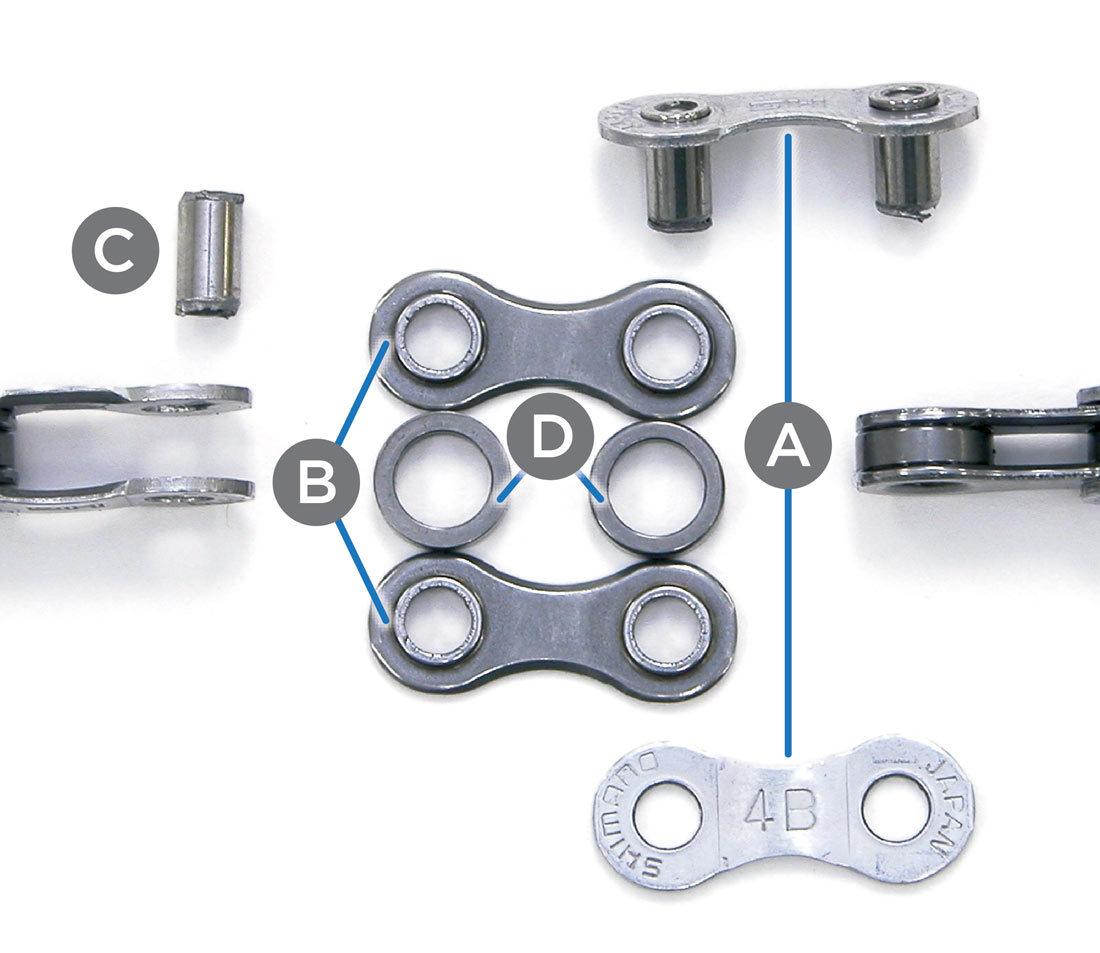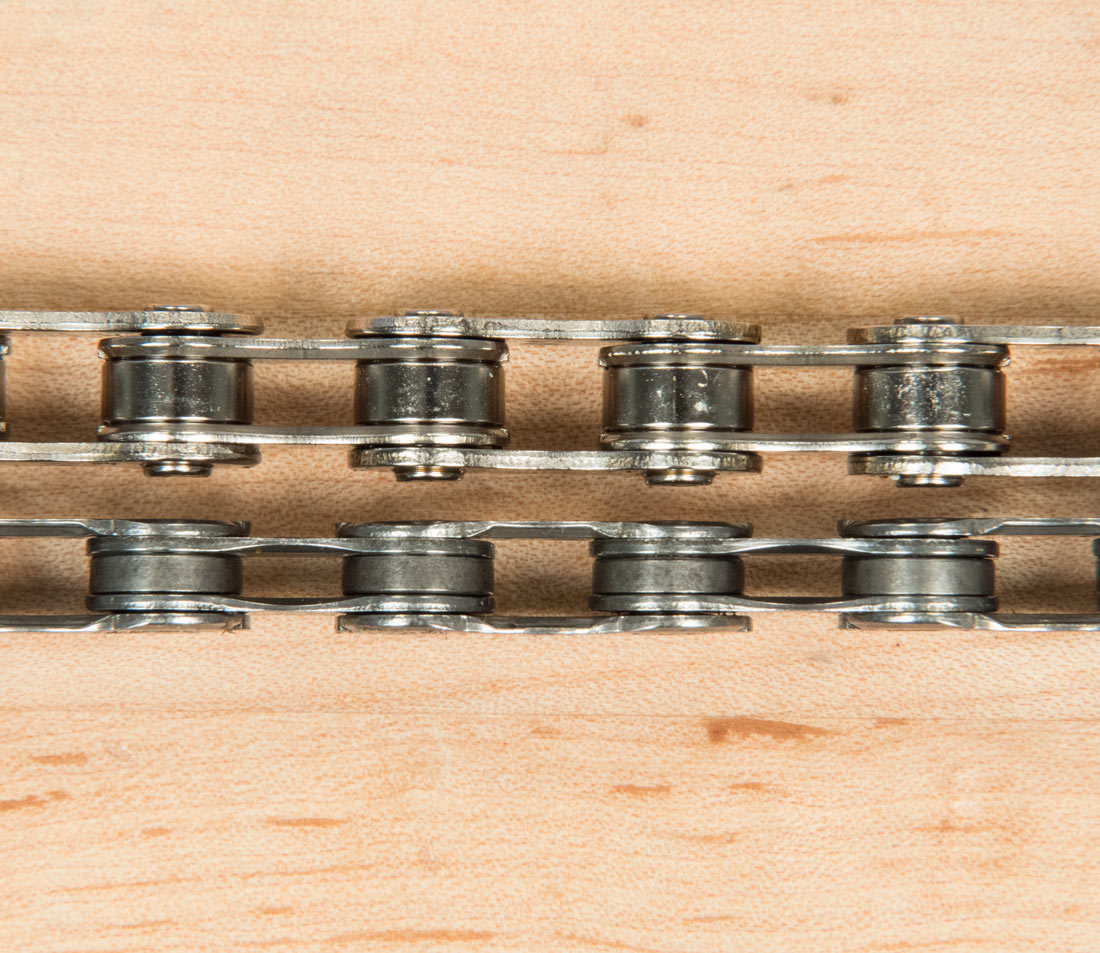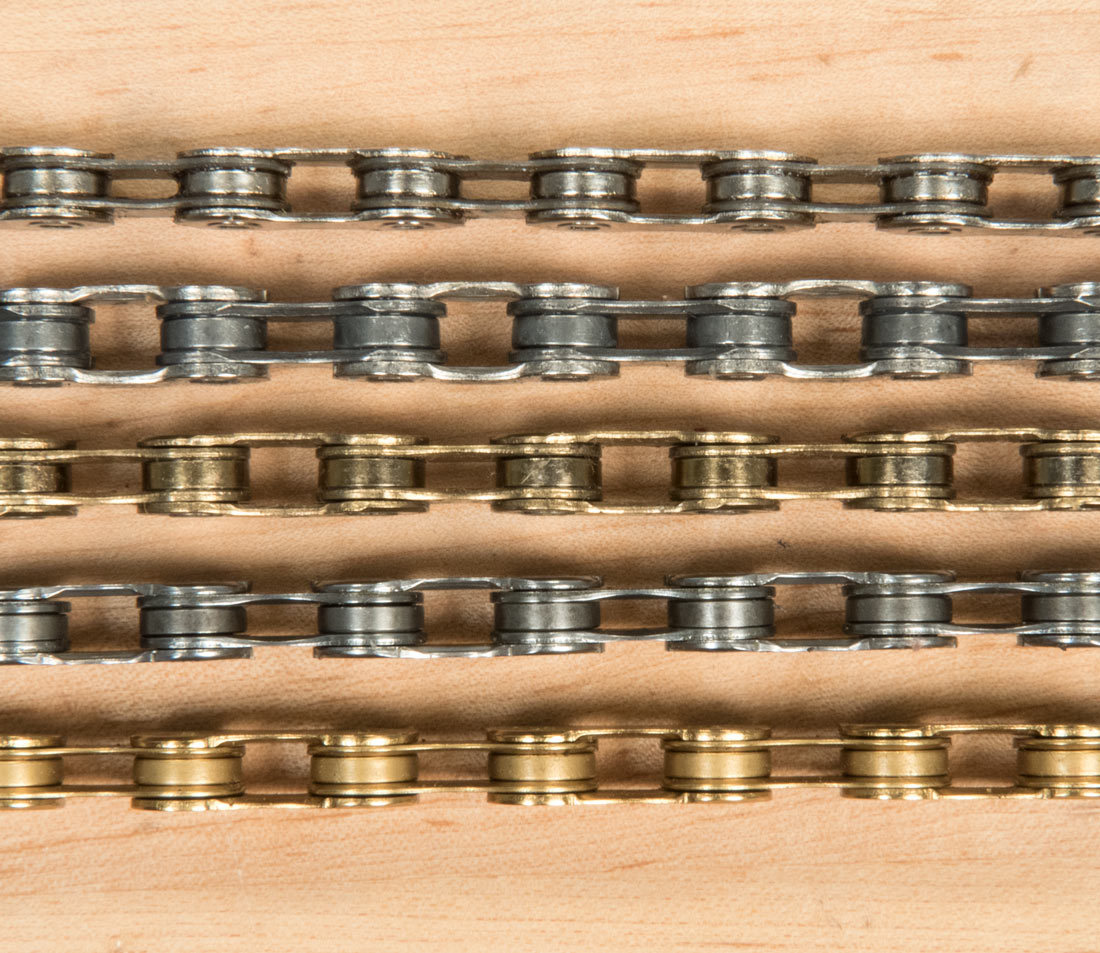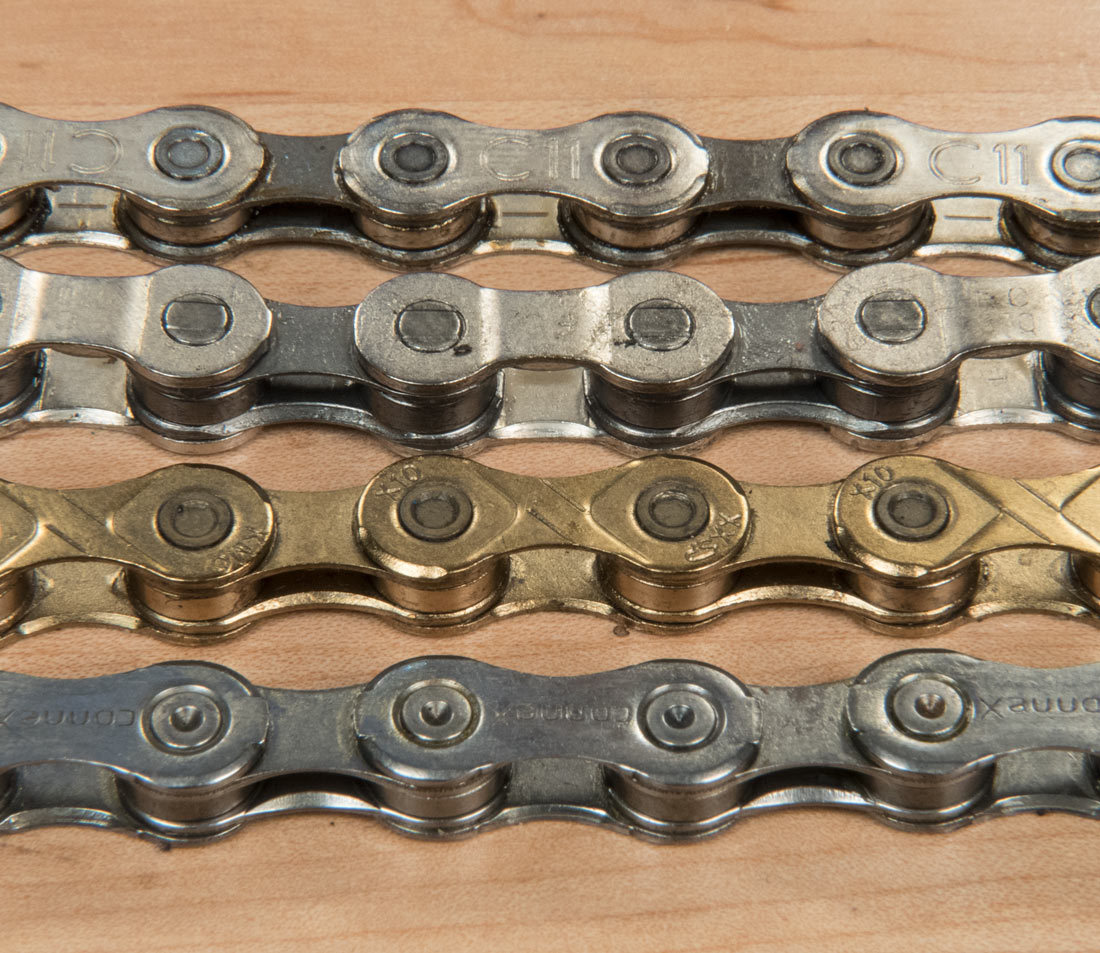Chain Compatibility
This article will review the basics of bicycle chain compatibility to help you know how to choose the right chain for your bike.
Preliminary Info
Bicycle chains are made of multiple pairs of steel outer plates and inner plates held together by rivets. A roller separates each pair of inner plates. The rivet (pin) is pressed tightly through both outer plates. The rivet then pivots freely on the inner plates and roller.

All modern bicycle chains are made to the “one-half inch pitch” standard, meaning from rivet to rivet is nominally 0.5 inches. The sprocket teeth are cut for this same one-half inch standard to accept bicycle chains. However, this does not mean all makes and models of chains are interchangeable.
There are two basic types of bicycle chains: “one-speed” chains, and derailleur chains.
One-Speed Chains
The common one-speed chain is designed for bikes with one sprocket on the crankset and second sprocket on the wheel. The width of the roller is nominally 1/8″ wide (3.3mm). The one-speed chains are not designed shift on the multiple rear cog sets of derailleur bikes.
There are rear hubs with multiple internally geared speeds, but the chain is still commonly called a “one-speed” chain. They are also referred to as “eighth-inch chain.” The 1/8″ chain will measure approximately 9mm across the rivet.

Some freestyle bikes use a wider sprocket and a wider 3/16″ one-speed chain. The idea is that this wider chain provides longer chain life for the purpose “grinding,” which is sliding down a rail or other long fixture on the chain.
Derailleur Chains
Derailleur bike chains are designed to be moved from sprocket to sprocket, and come in many different design standards. When selecting a chain, the first consideration is the number of rear sprockets. Rear cog sets exist with anywhere between 5 and 13 sprockets. As the number of cogs on the rear hub increases, the spacing between cogs tends to be reduced. Consequently, chains tend to get narrower as the number of rear cogs increases.
Nominally derailleur chains are called “3/32-inch chain.” However that is not a true measurement, as modern derailleur chains can vary from that sizing.
Some nominal widths measured across the rivet between chains are:
- 12 rear cogs — 5.3 mm
- 11 rear cogs — 5.5 mm
- 10 rear cogs — 6 mm
- 9 rear cogs — 6.5 to 7 mm
- 6, 7, and 8 rear cogs — 7 mm

In addition to the chain working on the rear cogs and rear derailleur the chain must be compatible with the front chain rings. Front cranksets are also designated for varying “speeds” to give an indication of the right width chain to use. The spacing between front rings for a 8 or 9 speed chainring set will be relatively wide. Using a narrow 10 or 11 speed chain may result in the tendency for it to fall between the two rings during a shift.
Drivetrain manufacturers design their chains to work as a system with the derailleurs, rear sprockets, and shift levers. Chains can vary in side plate shape, sizing, and height. Differences can cause variations in shifting performance between brands and models.
One specific model of note is the newer 12-speed chain design from SRAM. Marketed as “Flattop” chain, these chains have a distinctive side plate design as well as rollers that are larger than typical bike chain. These SRAM 12-speed chains are proprietary and are not cross-compatible with other 12-speed components — they must be used in conjunction with the components they were designed for.

Additionally, chains will vary in the quality of steel used. Better chains that are more durable and longer lasting tend to have harder rivets. Riding a bike tends to wear and thin the rivet as it is pulled against the inner plates.
Final Notes
When in doubt about chain selection, it is usually best to stick the the drivetrain manufacturers chains. It does get more complex when components become mixed. For example, a bike may have a SRAM® chain but Shimano® derailleurs, a Sun Race® cassette, and MicroShift® shifters. Some chains can be used between different brands. Consult a professional mechanic for recommendations. There are certainly times that chain selection is an “educated guess.”